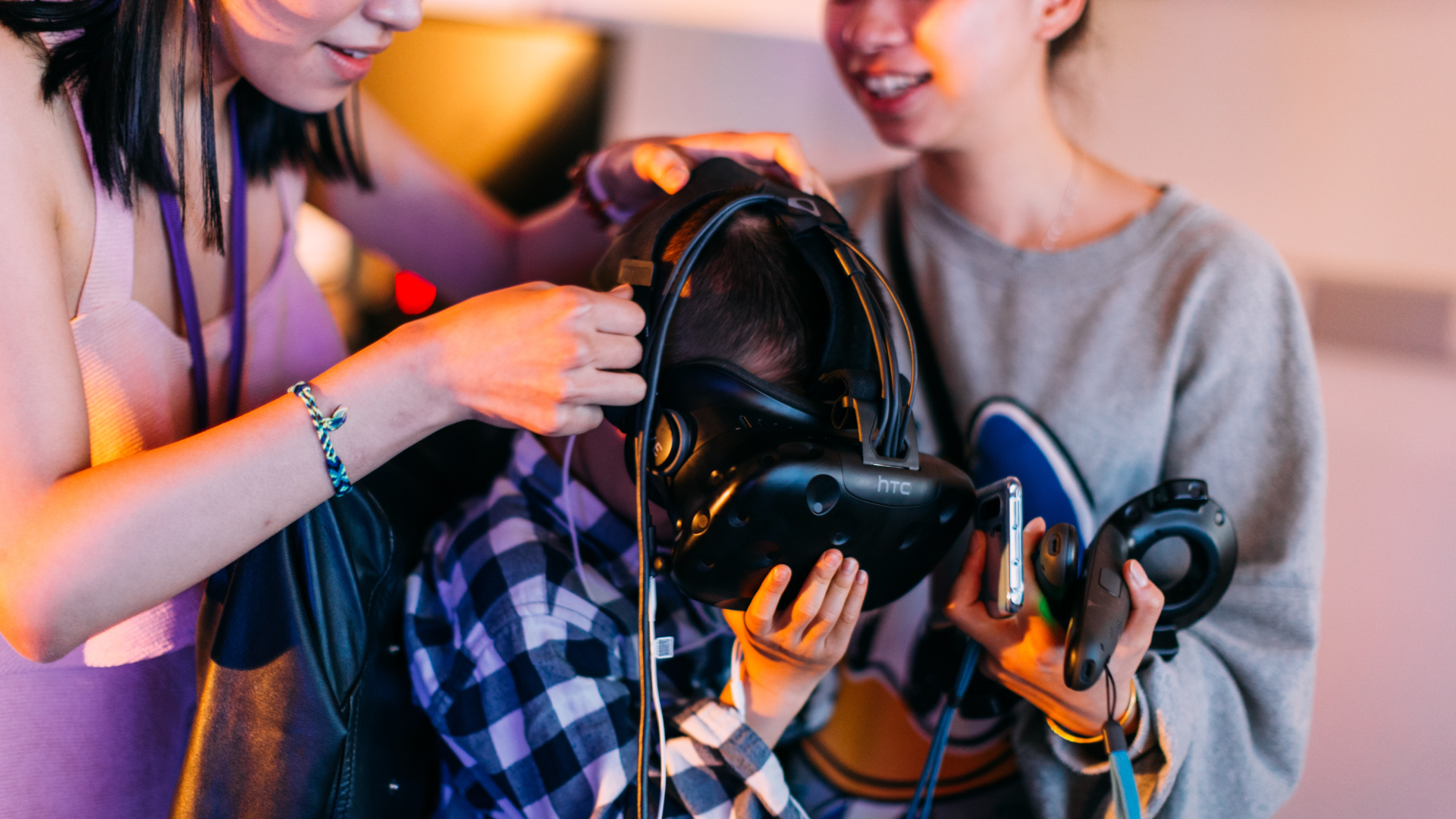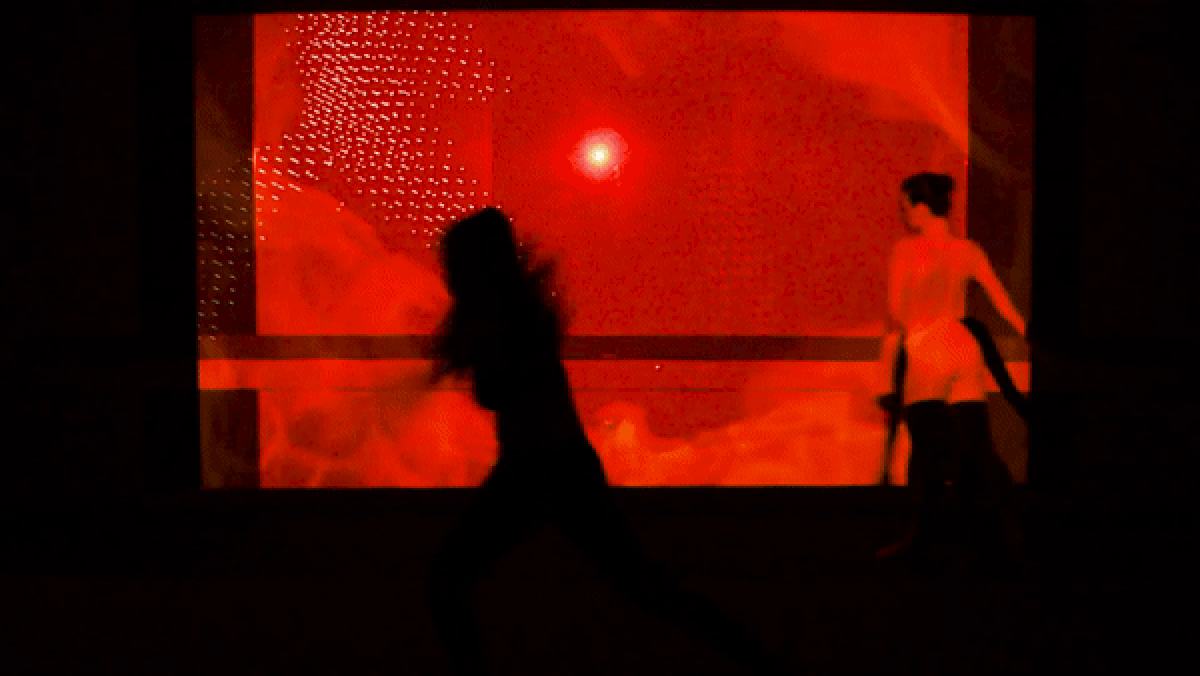Explore Current
2020, Seattle US
Role
Ideation, formative research, digital fabrication, physical computing prototyping, Unity Development
Ideation, formative research, digital fabrication, physical computing prototyping, Unity Development
Team
Divya Polson, Yating Zhang, Veronica Wojnas
Timeline
Jan 2020 - March 2020
Jan 2020 - March 2020
Co-designed with 7-11-year-old children, I lead a multi-disciplinary team to build big circuit soft blocks that control a virtual underwater world.
Playing is learning. Our game helps kids make connections between water current and circuit current.
I collaborated with a researcher, an industrial designer, and a developer. I lead ideation, electronics prototyping, and Unity game development in this project.
Overview
As a design response, Explore Current invites kids to explore the underwater world in a circuit submarine.
We need to design a walk-up and play game that has social value (related to health, cultural awareness, environmentalism)that is FUN. Game should react to user input in real-time (no perceptible delay) Game is multiplayer: must support at least two simultaneous players: one using physicality for input (body movement, facial expressions, vocalizations) and the second using a fabricated input controller.
In the process of building circuits that make submarine work, they can also learn more about the physics behind electricity currents.
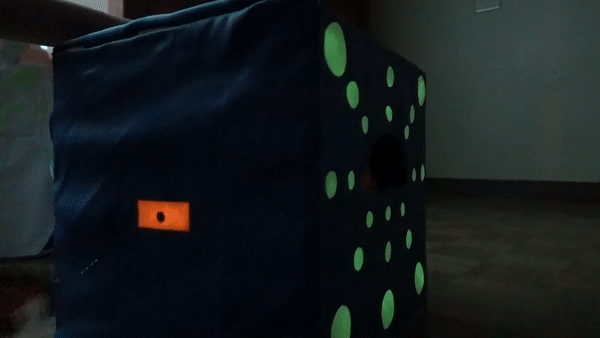
01
Connecting the blocks with big wires
the “+” and “-” teaches kids about the direction where the current is flowing in

02
Modularized circuit components at scale
patterns on the blocks indicates each block’s functionality

03
Immersive playground that provokes science education
a gamification experience that explains the science behind circuits
Ideation and Co-Design
Reimagine Experience at Scale
We conducted secondary research to have an understanding of the existing walk-up and play games in the market. Based on research, our team sketched 40 games to ideate fun game interactions.
By applying the “dot voting” method, we narrowed to 3 game directions that have the most potential for educational value and tangible play elements. These three directions are: Avoid the Bar, Building a Habitat, and Embodied Circuit.


In order to validate the game concept, we fabricated lo-fi prototypes and conducted a co-design session with UW KidsTeam, a group of children aged from 7 to 11.
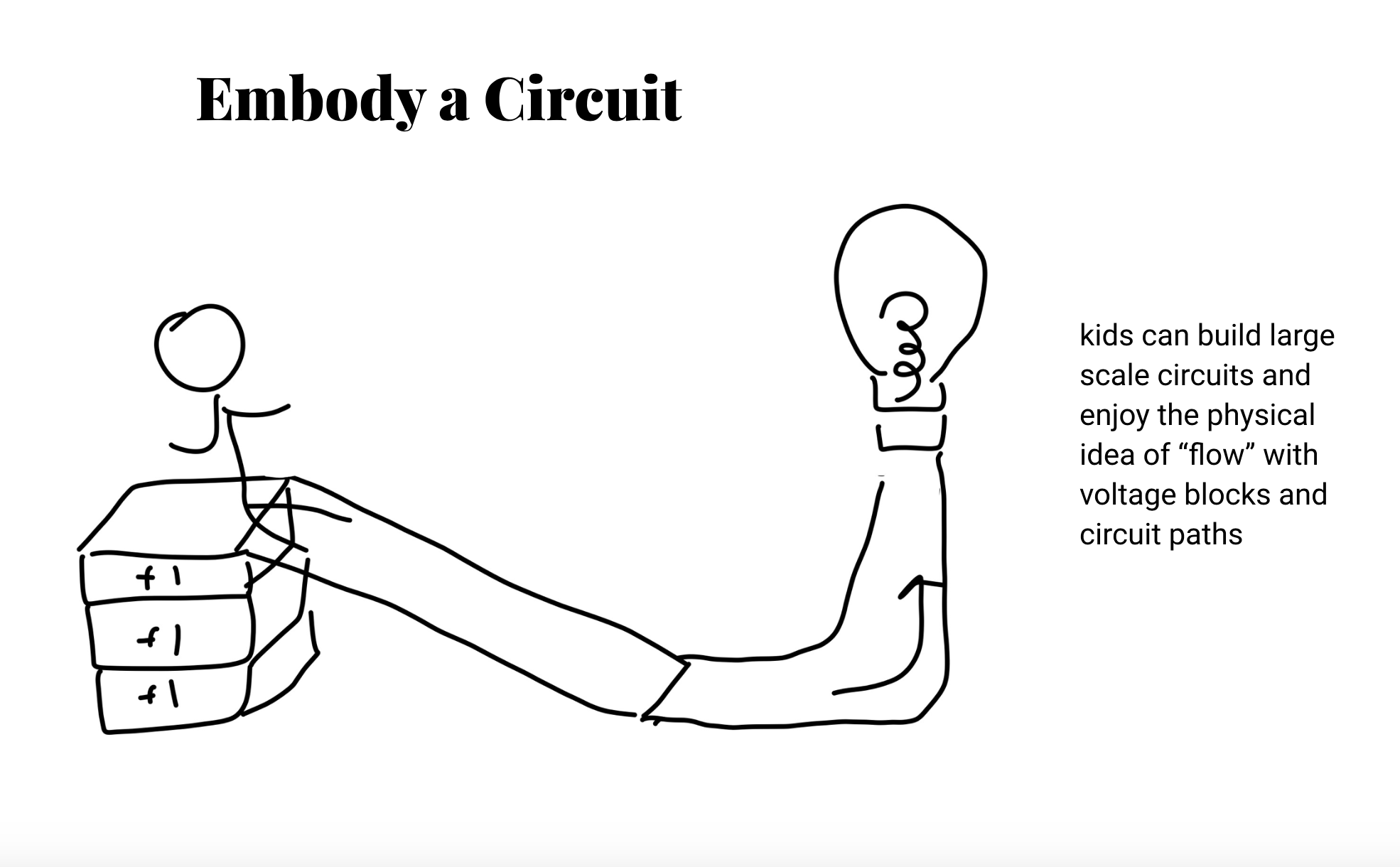


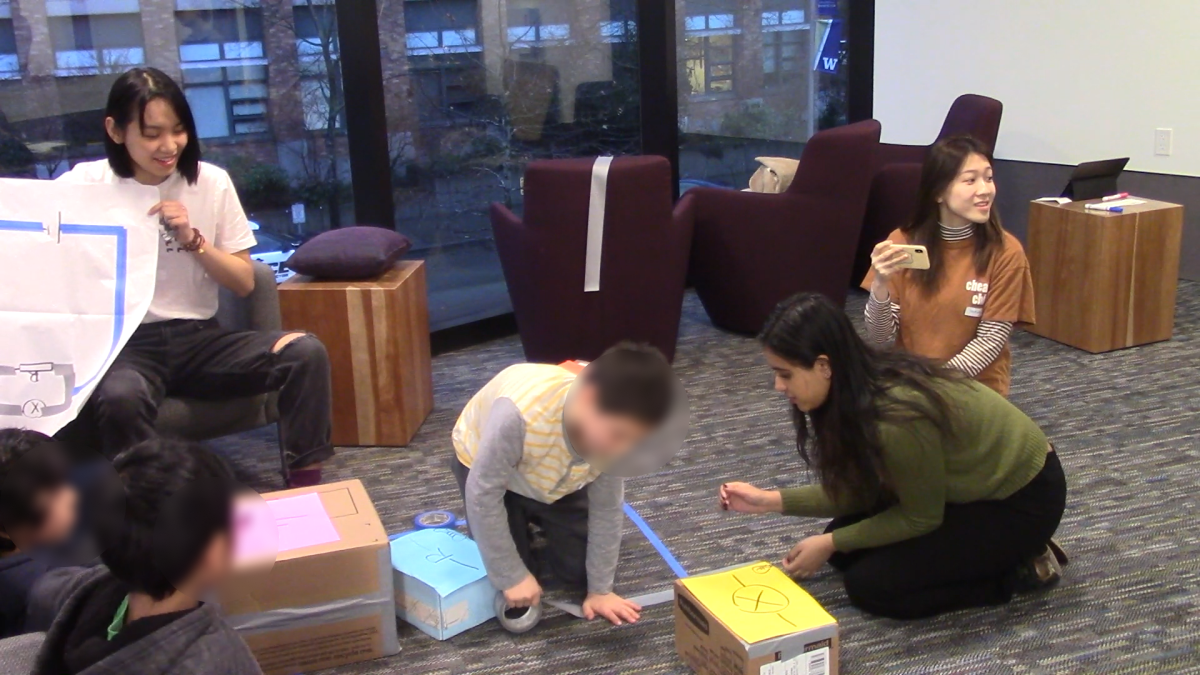
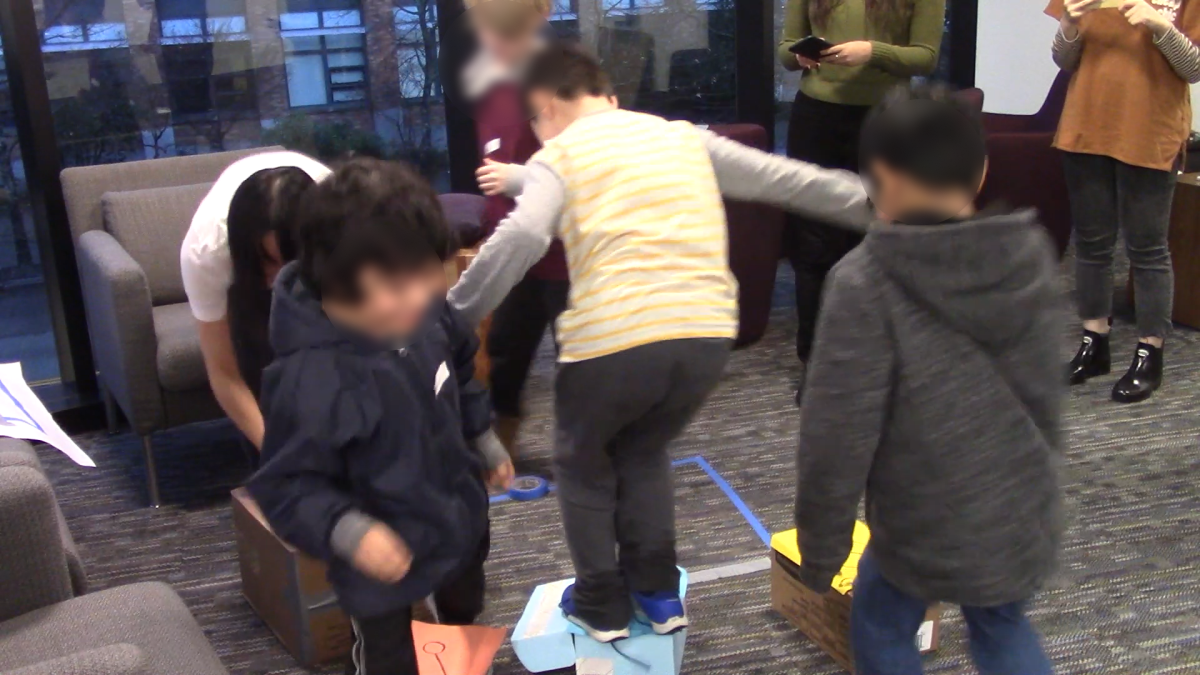
The kids picked the “embodied circuit” as the most memorable game of the session, even though they destroyed all the prototypes during the testing session.
"(of all the games) I liked Embodied Circuit the most. Because ... I like to destroy things!"
-one of the kids
User Testing
Wizard of Oz
Facilitate a Conversation with Kids through Prototypes
We conducted a competitive analysis to understand the space of game design with circuitry. There are a lot of successful circuit kits for STEM education, yet none of them played with the concept of scale. Combined with the feedback from the co-design session, we identify the opportunity of creating a soft, tangible game experience grappling with the concept of scale.
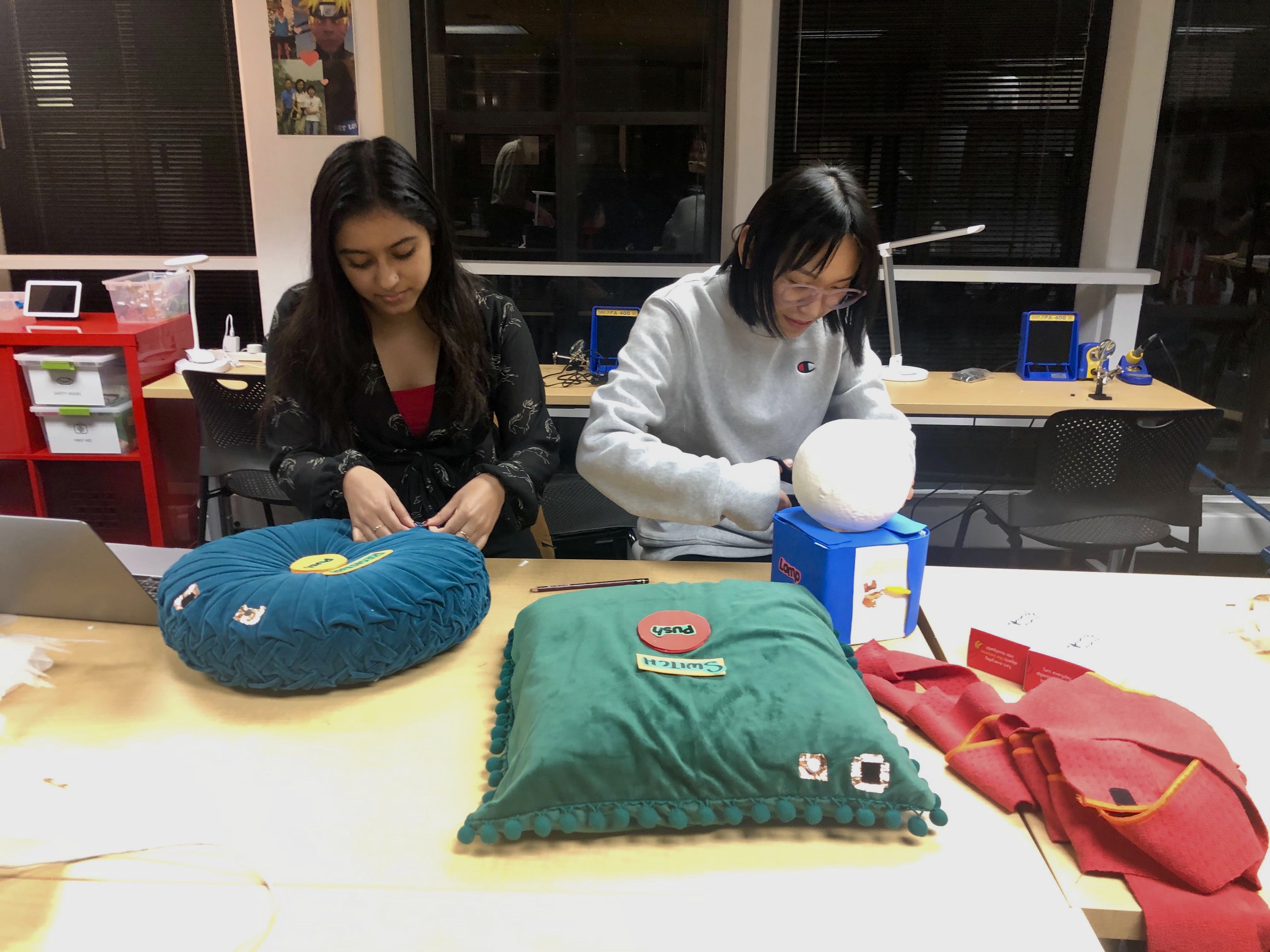
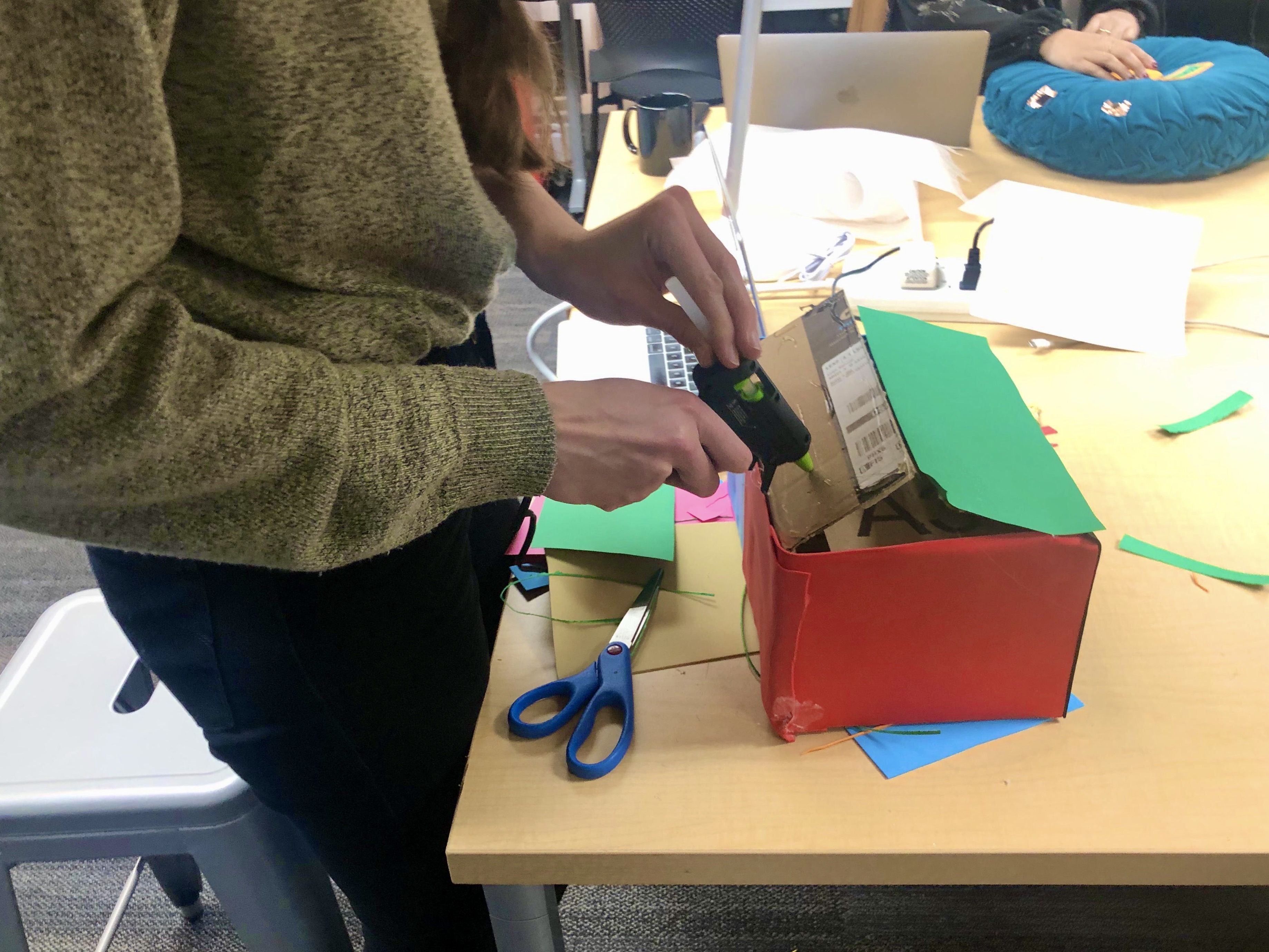
We wanted one of the takeaways of kids coming out of the experience is to have a different perspective of how the world works: something as delicate as a circuit can be soft and played around with as furniture in the home.

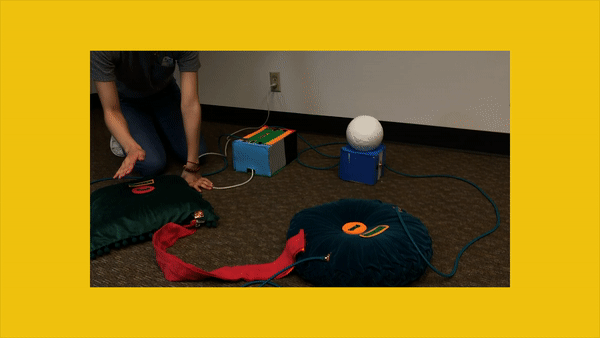
We conducted a Wizard of Oz session where participants were asked to build a circuit with blocks and faked the outputs to get a sense of the interactions and their reactions. Participants mentioned sound as a fun possible additional output, but found light variations more interesting than we had expected.
“I think this is kind of fun if I am seven years old. But I think the circuit is kind of short.”
-one of the participants
Prototyping
Game Controller
Being Creative about Technical Constraints
As a team, we defined the game will be in an exhibition setting with facilitators on site. We created a storyline of a lost submarine, cut short of power, it is seeking help from kids to regenerate power and to continue its expedition in the underwater world.
We proposed different design solutions around the design principle that the game interface should not be a conventional screen, hiding technology in the playground itself.
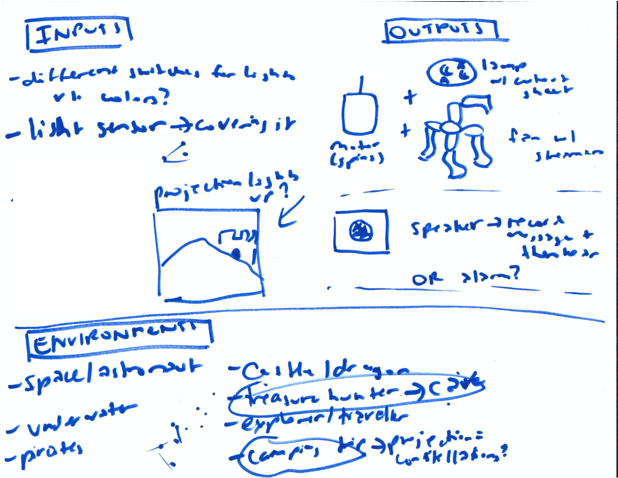
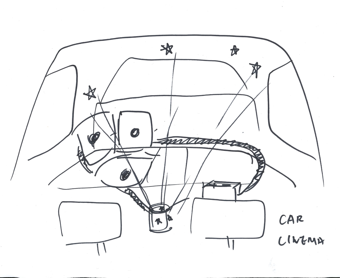

We landed on the idea of building a large scale circuit to explore the underwater world. Yating and Veronica lead the digital fabrication of the soft blocks.
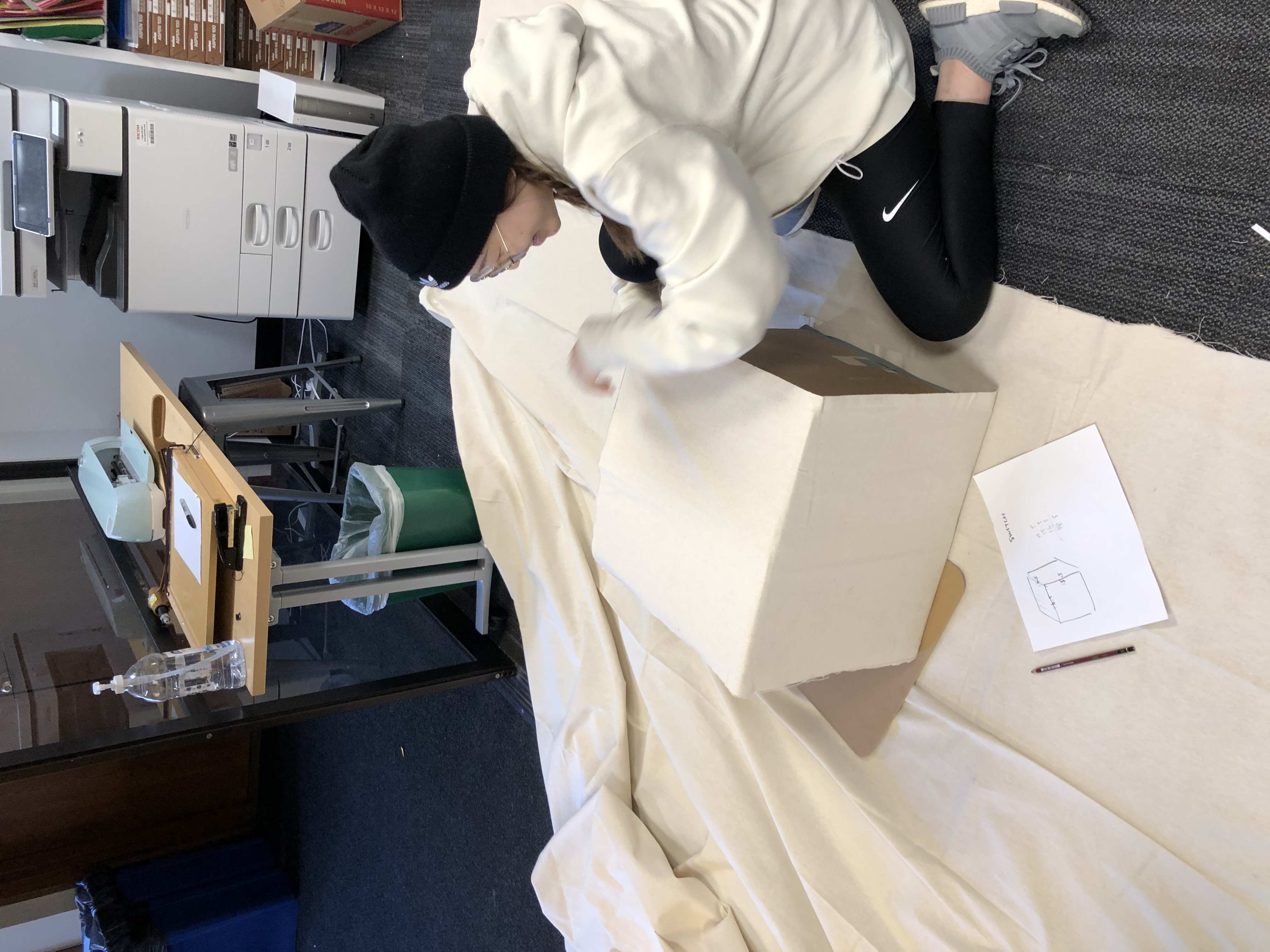

I lead the research into finding a feasible solution within the limited time constraint. I prototpyed circuit connection with GLS Audio 1/4" Jacks, blacklight and motors.

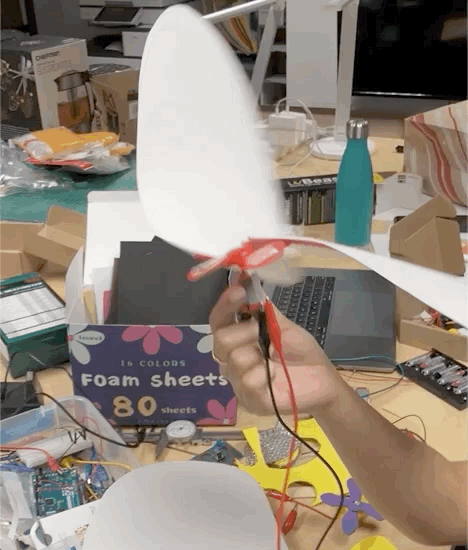
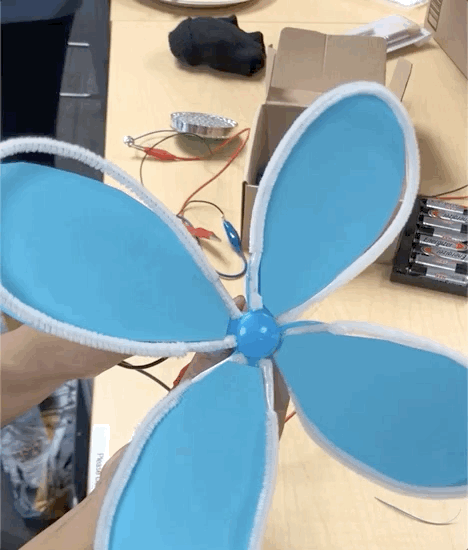

The large-scale circuit will be composed of 4 soft blocks: a switch block, a motor block, a power block, and a light block. Large, long wires are used to connect the different blocks.
The kids will assemble the big scale circuit with wires, which will trigger the submarine propeller and turn on the UV light.



The kids can shine the powered black light to the board screen to reveal the underwater world with UV-reactive paint. When they “discover” the mermaid (i.e. the light lands on the correct part of the painting), a song plays.

Iteration
Hearing the voice of kids
We conducted usability testing with the UW kids team to test how intuitive is the tangible interaction. We learned that the amount of effort of trial-and-error that the kids are invested in does not match their expectation from the final output. The analog game interface was cool for the kids at first sight, but was not able to sustain a longer attention span.



Therefore, we also sat down with kids in a co-design session, ideating other game components under the submarine theme. The kids inspired us to create a truly immersive underwater world with a storyline built around the expedition of a submarine.
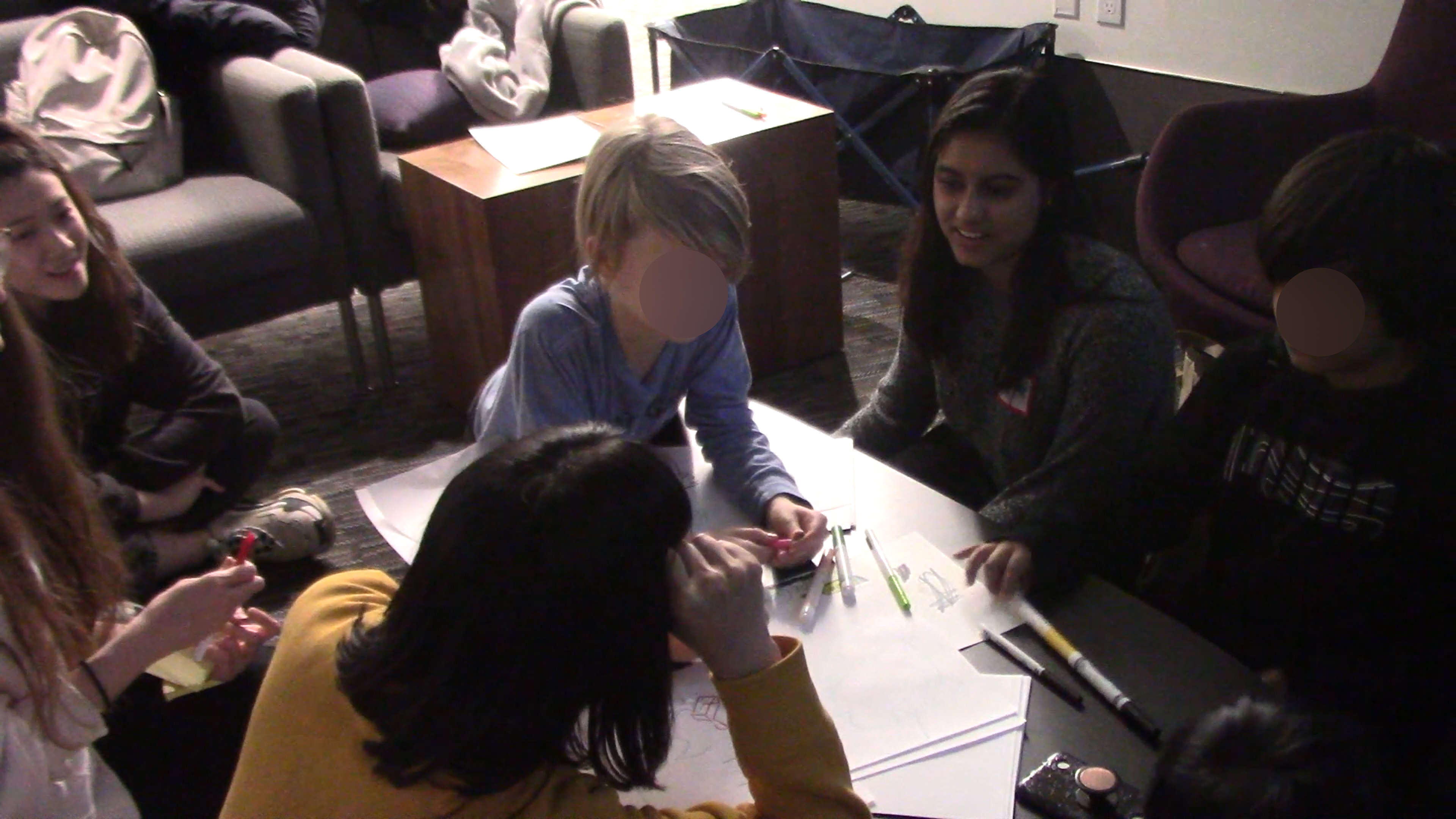
Final Game
Extending the boundary of playground by creating a virtual underwater world
To tighten the storyline of a submarine, we decided to add a component of using the circuit to control an immersive 3D underwater world. To facilitate learning, we designed game narratives for kids to better make the connection between the circuit current and the ocean world.

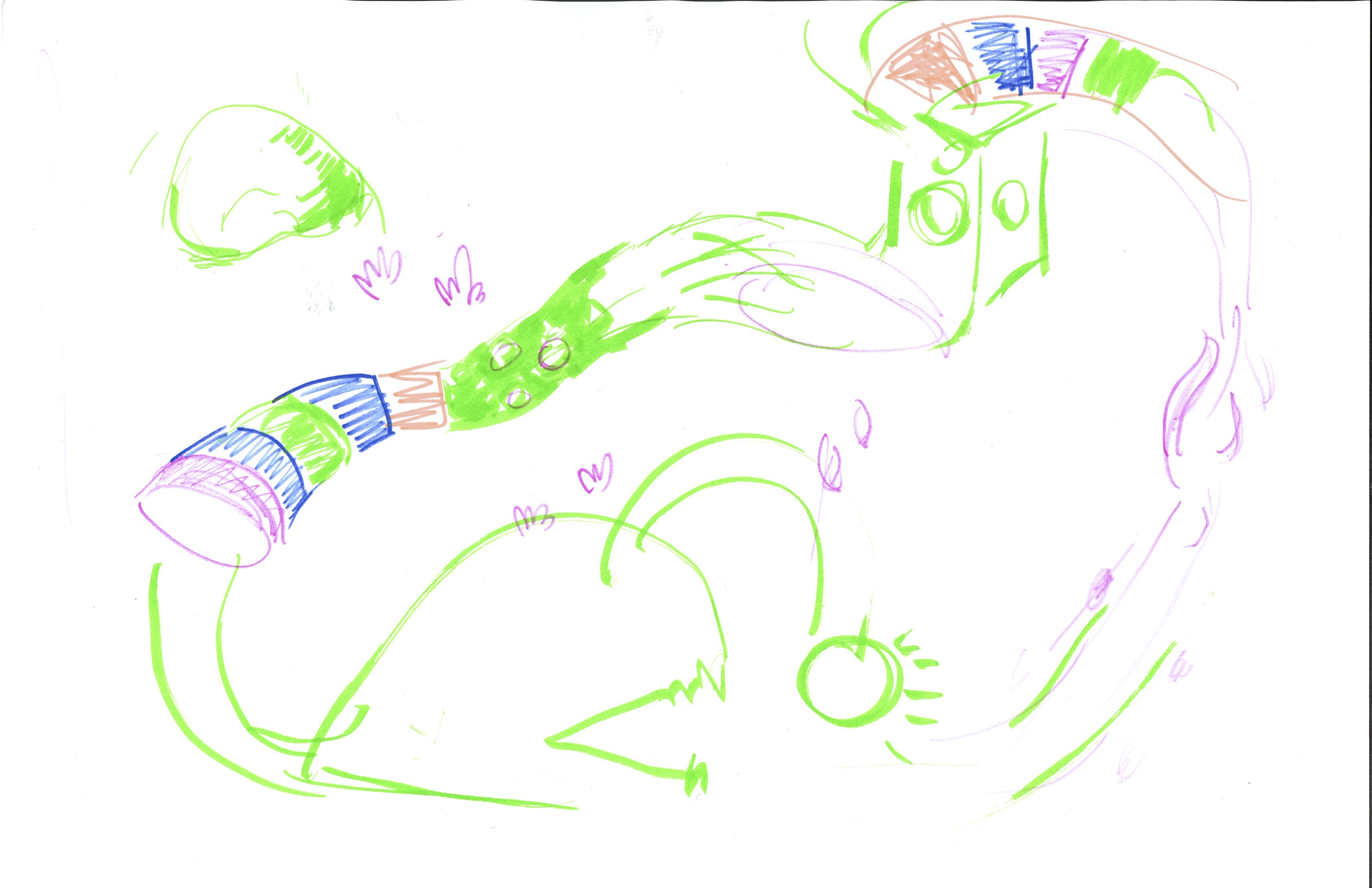

I led the electronic game controller development with Adafruit Feather Bluefruit LE, and game development in Unity 3D. I prototyped the Bluetooth connection from an electronic controller, then hacked an arcade joystick to be fabricated in the final soft controller block.
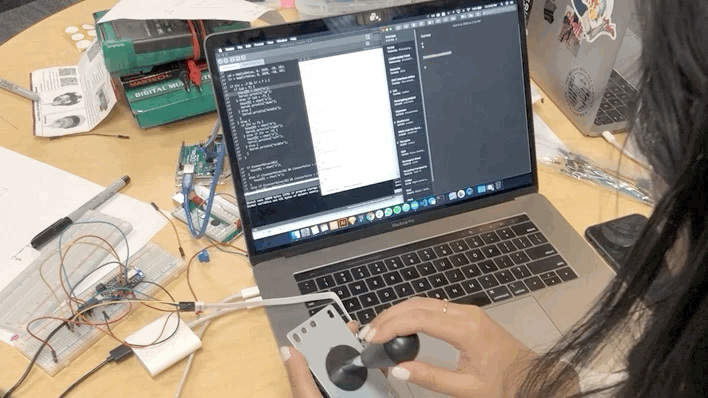


To ensure the soft blocks are intuitive in circuit connection, we decided to use color coding for power input and output, and hint block functionality through their pattern design.
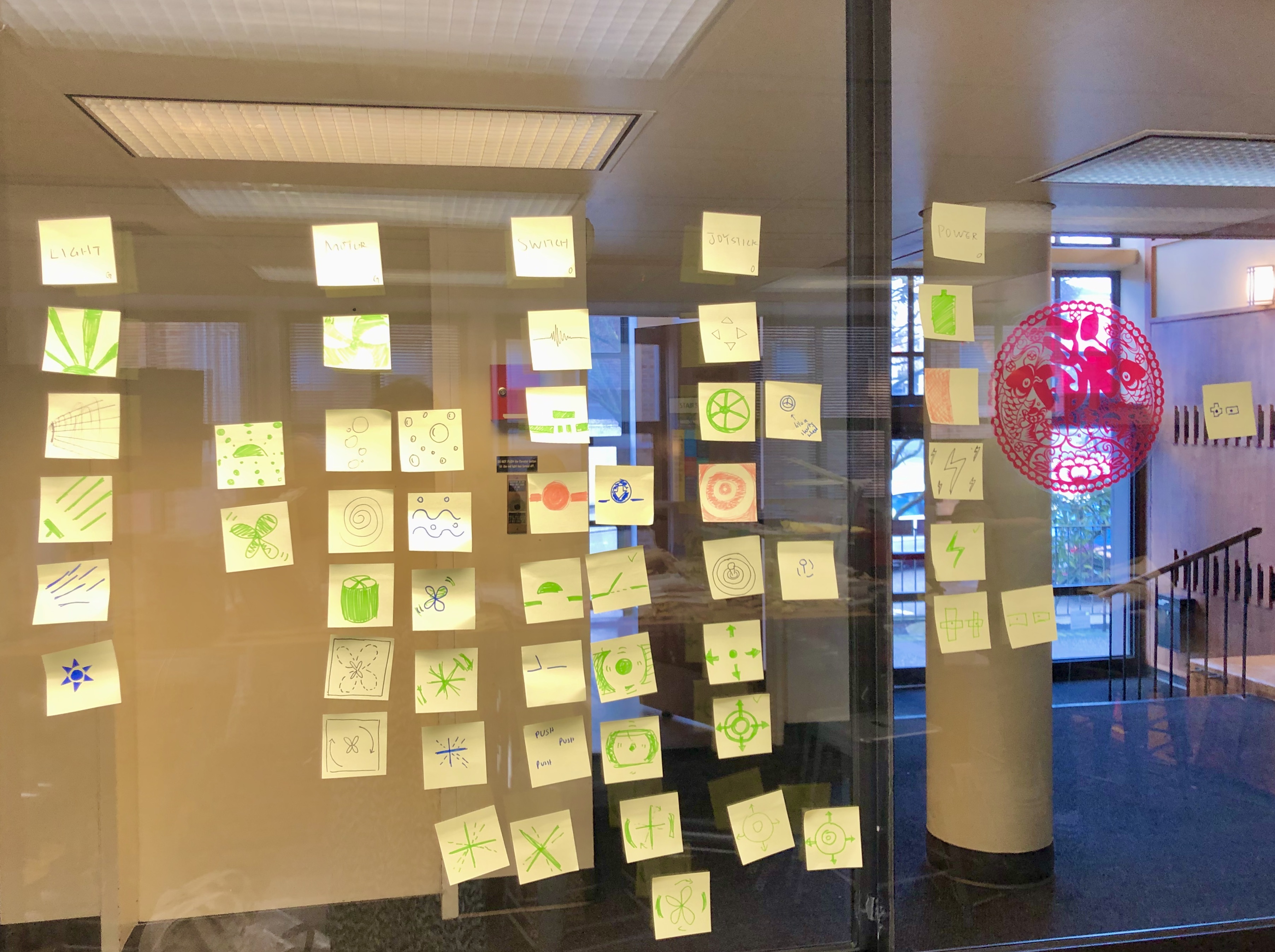

Takeaways
Put Lo Fi Prototypes in the Real World
Due to budget and time constraints, many design artifacts in the process are extremely Lo Fi. We reused, recycled, and hacked differently daily objects (cardboard boxes, bubble machines, pipe cleaner, arcade joystick, audio jacks) that were originally for completely unrelated purposes. However, we still gained great insight by leveraging the value of co-design sessions. These low stake artifacts helped us to develop an open mindset to receive feedback from participants, which really shaped the direction of our project.
Design with a Principle
Informed by secondary research, we aligned a design principle that we will create tangible games with large scale, and one of our desired outcomes is to make the game educational. However, making each soft block is technically challenging and expensive for electronics. Without the blocks being sentient of other components, it is hard for kids to really learn debugging. However, our design principle directed us to focus more on the tangible play experience compared to technical learning, which helped anchor the team to move forward.
Align Stakeholder Values
As we were working with kids for the game concept development, we found some inherent tension between making a fun, intuitive game for kids and imparting STEM education/social value in the game design. In the process of balancing the value from two stakeholders, I learned that it is important to acknowledge that promises are needed in real-world design.
